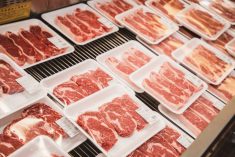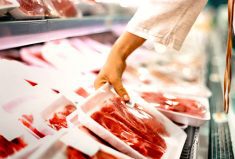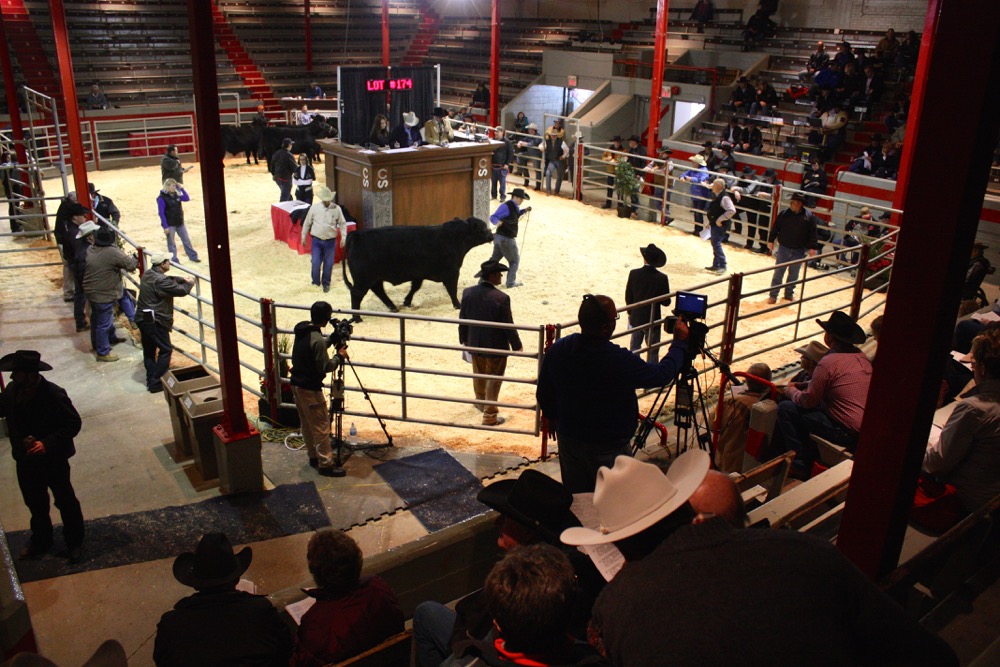Sharing data through the entire beef chain adds value that can translate to economic gains — although how much of that might go to cattle producers is a question yet to be answered.
McDonald’s Canada, Beefbooster, and BIXSco — the company now running the Beef InfoXchange System — recently collaborated with Livestock Gentec to analyze two million records of carcass data. The analysis found calves sired by Beefbooster Terminal Cross bulls were worth $219 more than the average value of calves processed by packing plants from 2012 to 2014.
The Calgary company has been using production data since 1970 to breed superior bulls, but this data gave it an exact dollar figure on the quality of carcasses of cattle sired by its bulls versus average cattle.
Read Also

Farming Smarter receives financial boost from Alberta government for potato research
Farming Smarter near Lethbridge got a boost to its research equipment, thanks to the Alberta government’s increase in funding for research associations.
“We can take carcass information and say that there’s value between the different breeds and the different bulls,” said Jennifer Stewart-Smith, chief executive officer of Beefbooster.
“You will know whether your cattle are grading or yielding well, just by looking at (the data). If you wanted to dive deeper into it, then you could start making breeding decisions based on that information, if you wanted to refine the animals that are producing more of those types of carcasses for you.
“The more information you have on how well your cattle do, the more that adds to you being able to make better decisions.”
However, there is a major hitch — as it stands right now, cow-calf producers don’t get paid more for producing cattle that grade higher.
“That’s always going to be a problem,” said Stewart-Smith. “That’s part of the reason they don’t want you to know anything. Their model is based on us (cow-calf producers) not knowing how well the cattle are doing.
“Now that we know and this is out there, and we know the potential of the cattle that are making more money, there’s a better chance of being able to get more money. But right now, they’re not paying us for that, not at all.”
However, packers have been limited by a lack of data, too. They know which cattle are more valuable, but they wouldn’t normally know who raised them.
“And the producer certainly didn’t know that there is that value on his/her carcasses because we really haven’t had that carcass information to analyze,” noted Stewart-Smith.
Another gap is that feedlots are not putting any data into BIXS yet. Data quality was another issue. Because the two million records entered into the Canadian Livestock Tracking System for a federally sponsored project in 2012-14 didn’t have the birthdates of the animals, BIXSco had to mine its data to find birthdates. It found them for 127,000 animals, so the sample size was relatively small.
Although not definitive, this study will be a stepping stone to other projects of this nature.
“This is a very, very first step,” said Stewart-Smith. “But it does prove that yes, the information is valuable, can be shared, and can be used by producers to make better decisions in their herds.”
The analysis also produced two other significant findings.
One is that calves slaughtered before 19 months of age — versus those slaughtered at 24 months — had higher-value carcasses. And if they are slaughtered at 18 months instead of 24 months, 1.2 fewer tonnes of carbon dioxide are generated per head.
The analysis was co-funded by the Alberta Livestock Meat Agency and McDonald’s as part of the latter’s verified sustainable beef pilot project. The goal was to evaluate the usefulness of sharing data across the beef industry. The study shows a robust database “has the potential to increase the economic viability, social responsibility, and environmental sustainability of the entire Canadian beef community,” said Jeffrey Fitzpatrick-Stilwell, McDonald’s Canada’s senior manager of sustainability.
The carcass valuation was done using a grid employed by Cargill at its High River plant that captures weight, quality, and yield grades. More details of the data can be found in the report — go to www.mcdvsb.com, click on the News tab, and then scroll down to find a link to the report.
















